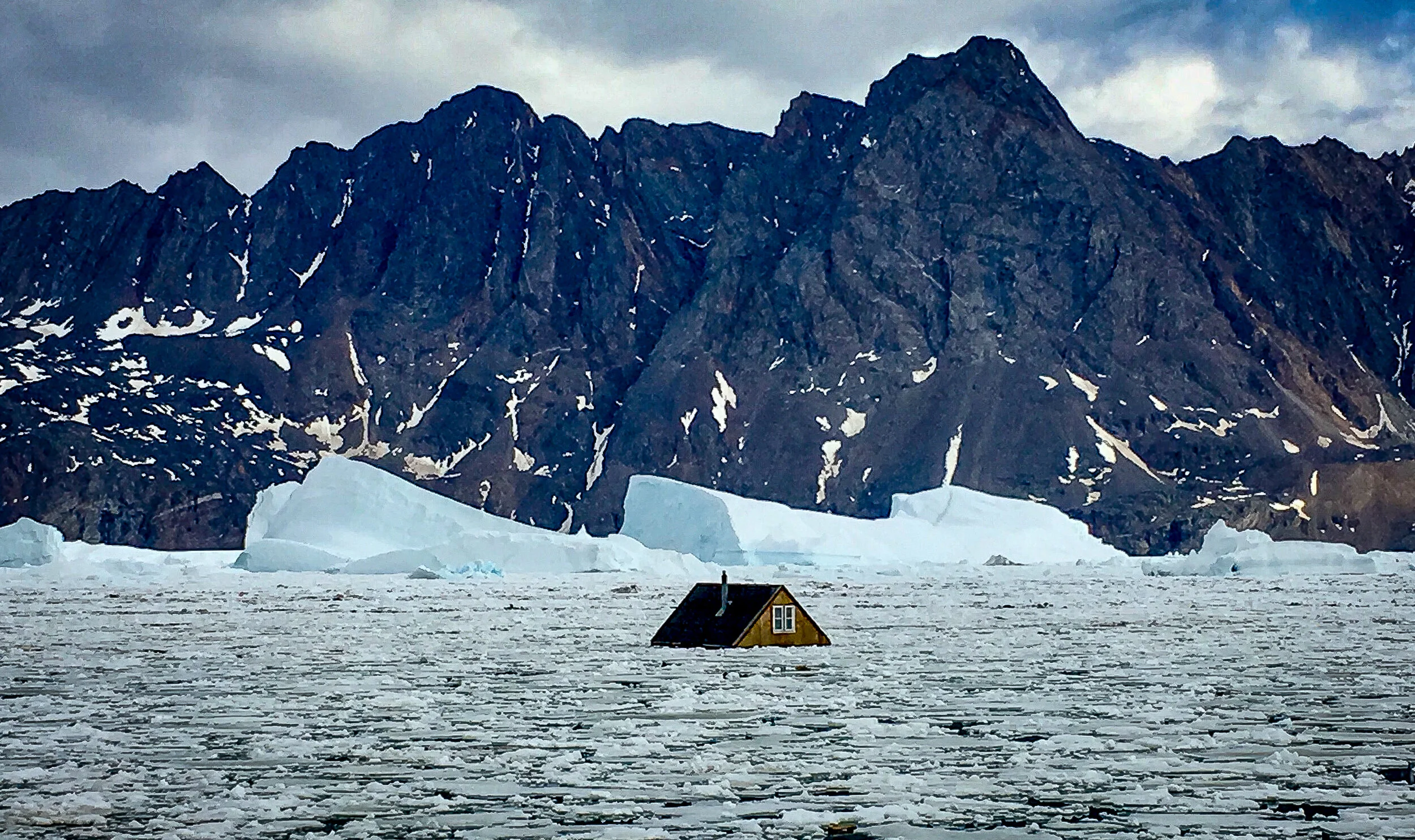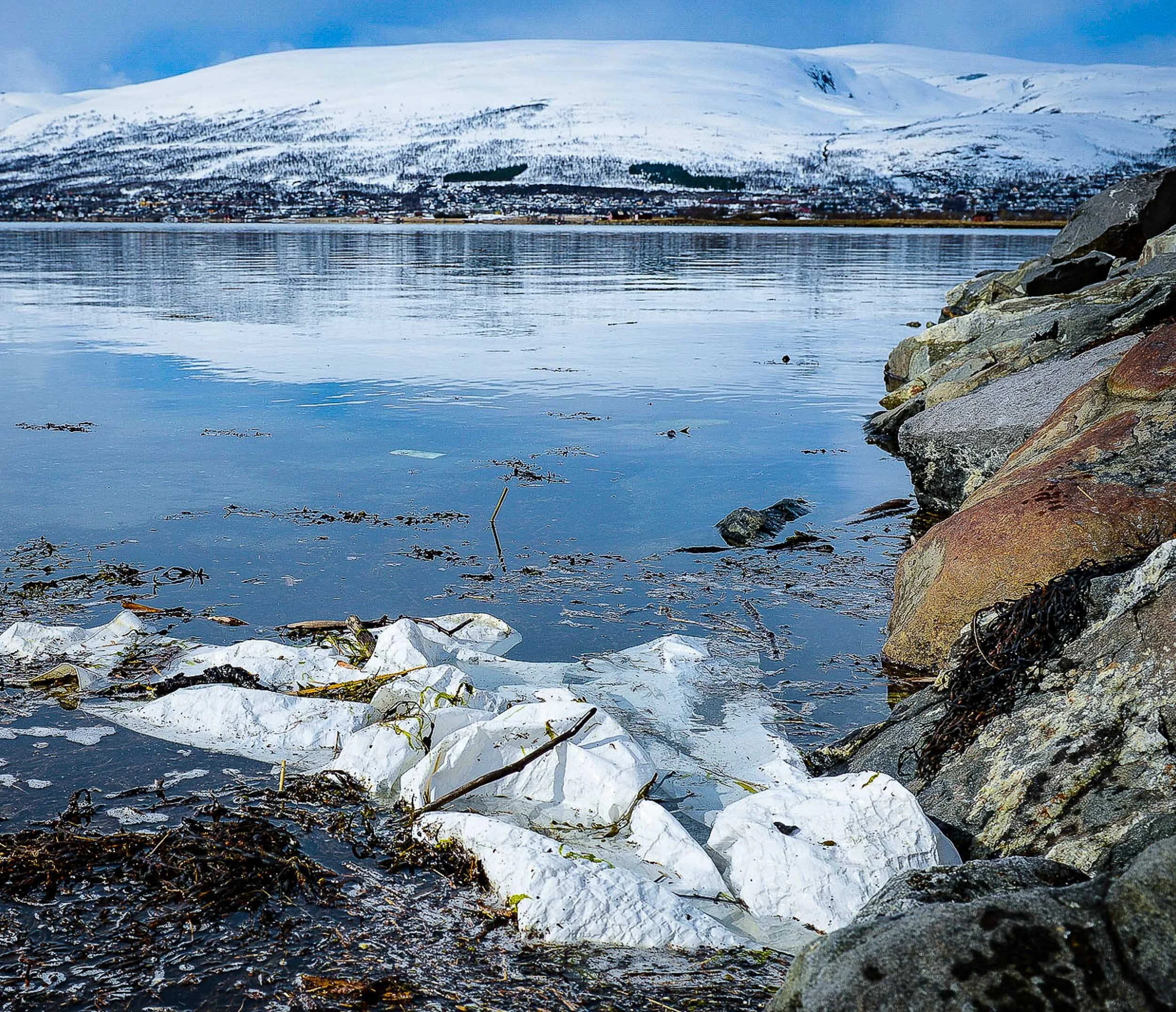Science at the end of the earth
SCIENCE
Text: Helge M. Markusson,
Fram Centre
Photographs:
Winter /Helge M. Markusson, Max König, Norwegian Polar Institute
Summer/Justin Levesque
December 2019 - updated
Ny-Ålesund is the most northerly permanent civilian settlement in the world. Here, at 79°N, twenty nations are conducting research projects, and now Ny-Ålesund is full.
It’s an autumn evening in Ny-Ålesund in Svalbard and the normal working day is long over, but in a second-floor office in the Sverdrup station, a glaciologist is still immersed in his work. “It’s essential to spend my time here as effectively as possible, which makes for very long working days,” Jack Kohler explains.
Kohler is the fourth scientist from the Norwegian Polar Institute, in a row to be monitoring mass movements on the glaciers around Kongsfjorden. The Norwegian Polar Institute has been taking measurements on these glaciers ever since 1967, which makes the data series one of the longest in Arctic regions.
His main project has involved measuring the changes in the glaciers, how much snow falls on the glaciers in winter and how much melts in summer. Twice a year, Kohler comes from the Norwegian Polar Institute’s head office in Tromsø to the Institute’s research station in Ny-Ålesund. In the winter, he and his assistants set out collapsible aluminium rods, and the following autumn he returns to measure how much ice and snow have melted. The thickness of the glaciers ranges from 50-60 to 600 metres.
“The glaciers are definitively getting smaller, and most of that is due to the increase in temperatures in Svalbard. Even though it can snow a lot on the glaciers in winter, that doesn’t compensate for the increasing temperature,” says Kohler.
To get to and from the Kongsbreen and Kronebreen glaciers in the autumn, the scientists use a helicopter. In winter, they mostly use snow scooters, provided the glacier is within two hours’ drive each way. If they need to go further than that, the helicopter is preferable.
“The alternative is to set up camp with tents, with everything that involves, including posting a lookout for polar bears. We’ve seen bears on the glaciers a number of times,” Kohler adds.
Sverdrup station, inaugurated in 1999, is not the only research station in Ny-Ålesund. Walking through this community, you may be reminded of a district in a much bigger city –namely the streets around the United Nations Headquarters in New York, where countless countries are represented with their buildings.
Research projects from twenty nations
In 1968, the Norwegian Polar Institute was the first institution to establish an all-year research station. Today, Ny-Ålesund is also home to manned research stations from Germany, France, the Netherlands, the United Kingdom, Italy, India, China, South Korea and Japan. Some twenty nations have research projects in and around the world’s northernmost settlement, though not all of these nations have activities year-round. Germany and China do, though. Since 1991, the Alfred Wegener Institute has operated the Koldewey Station, which is engaged in biological and atmospheric research. The Polar Research Institute of China opened the Yellow River Station in 2004, and conducts research on the atmosphere, northern lights, biology, glaciology, geology and marine biology.
Above this cluster of research stations soars the mountain Zeppelinfjellet, with the Zeppelin Observatory 475 metres above sea level. This research station is key to monitoring the global atmosphere. The data collected here are central in mapping climate change, changes in stratospheric ozone and UV radiation, and environmental toxins and air pollutants transported over long distances. The station building is owned by the Norwegian Polar Institute, while NILU – the Norwegian Institute for Air Research, has scientific responsibility for the station.
And down by the harbour, on Kongsfjorden, lies the well-equipped Marine Laboratory, operated by Kings Bay, the company that runs the entire town. The marine lab was opened 10 years ago, and there is now periodically a waiting list to book working space here. There is currently discussion about erecting a similar laboratory for non-marine scientific disciplines in Ny-Ålesund.
Growing need for larger shared laboratories
“We need more and larger shared laboratories,” explains Kim Holmén. As a climatologist, previously employed at NILU, and now International Director at the Norwegian Polar Institute, he knows the conditions at Ny-Ålesund extremely well.
“This year it’s become quite clear that the marine lab is too small. Several of the research stations have had to resort to improvised workspaces that are far from satisfactory. But here we find several dilemmas cropping up: increased activity will increase the amount of stray light, which can perturb important optic measurements in the winter, but on the other hand, more activity will give Kings Bay stronger economic legs to stand on. The new fibre-optic cable to Ny-Ålesund will mean greater capacity to carry out remote sensing and less need for researchers to be physically present for long periods. At the same time, the cable will result in increased activity. We need to grow in terms of quality rather than in the number of scientists in the village,” says Holmén.
Facts about Ny-Ålesund:
At 78°55′00″N 11°56′00″E, Ny-Ålesund is the world’s northernmost permanent civilian research station and has developed into what is today a modern, international, Arctic scientific research and environmental monitoring base.
Up until 1962, Ny-Ålesund was a coal-mining town, but mining ceased following a major accident. Since 1964, Ny-Ålesund has been built up and developed as a centre of international Arctic research and environmental monitoring.
Several countries have research stations in the village. During the summer season, research activity is high and the population mushrooms to 150 people, versus only about 35 in the winter.
Several of the Fram Centre’s research institutions have considerable activity in and around Ny-Ålesund: the Norwegian Polar Institute, the Norwegian Mapping Authority, NILU – the Norwegian Institute for Air Research, UiT – the Arctic University of Norway, the University Centre in Svalbard, and the Norwegian Institute for Nature Research.
The infrastructure and the Marine Laboratory in Ny-Ålesund are operated by Kings Bay AS.
Christina A. Pedersen, research coordinator at the Norwegian Polar Institute.
Kim Holmén, climatologist and International Director at the Norwegian Polar Institute.
Per Erik Opseth, head of the Norwegian Mapping Authority's Geodetic Institute.
Christina A. Pedersen, research coordinator at the Norwegian Polar Institute, elaborates: “The main problem is that an increase in activity will lead to an increase in emissions. On the one hand, we want to offer the excellent opportunities we have in Ny-Ålesund to all other researchers, but on the other, it is incredibly important that we don’t affect the surroundings and the conditions we’re measuring, so that we draw faulty conclusions as to the causes of observed changes. This is our dilemma.”
Ny-Ålesund is considered the northernmost settlement in the world. Conditions at almost 79°N challenge both those who live there and those who operate the infrastructure. Kings Bay AS. JONAA© Helge M. Markusson
The Norwegian Mapping Authority’s existing geodetic earth observatory will go on running until the new observatory is fully operational in 2018.
JONAA©Helge M. Markusson
JONAA©Helge M. Markusson
JONAA©Helge M. Markusson
New observatory to keep track of satellites in polar orbits
And while we are talking about size and quality, the decidedly largest project as regards research facilities in Ny-Ålesund is going to be inaugurated in June 2018. The Norwegian Mapping Authority’s new Geodetic Earth Observatory will be the latest addition to a global network of space geodetic stations, which measure and monitor the size and shape of the Earth, its orientation in space, the exact location of points on its surface and how these locations change over time.
"From Ny-Ålesund we will combine several geodetic measuring techniques to map the Earth’s motion more accurately, says Per Erik Opseth, head of the Norwegian Mapping Authority's Geodetic Institute.
The Norwegian Mapping Authority will monitor changes in the Earth and contribute to providing decision-makers with a framework of reference for climate research, for all mapping of – for satellite orbits – your and my GPS systems, and for navigation and positioning services. After a period of overlap, the existing geodetic antenna by the air strip will be phased out and all data will be acquired at the new observatory.
Ny-Ålesund will play host to a station that is one of the foundation stones in the global infrastructure designed to underpin more accurate monitoring of, among other things, sea-ice melt and sea level change.
The new station, which will be the northernmost facility of its kind, has an estimated cost of about NOK 300 million. ▢
Helge M. Markusson works as Outreach Coordinator at The Fram Centre (FRAM High North Research Centre for Climate and the Environment). Author and columnist. Former journalist of newspapers, radio and TV. Has also been involved in a series of smaller and bigger culture projects. Raised in Northern Norway, living in Tromsø, Norway. Helge is a member of the JONAA founding team.






















































